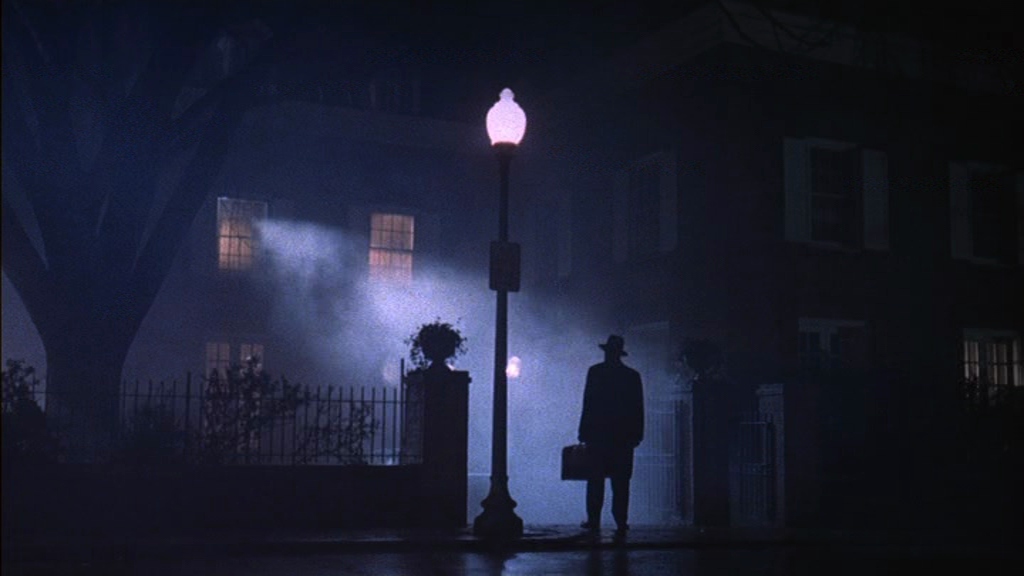Jake Sulpice
The Exorcist
Watched on October 31, 2023

It’s beyond me why I haven’t seen this before today. Widely regarded as one of the greatest horror films of all time, The Exorcist is a cinematic feat worthy of its far-reaching influence, not only in the motion picture industry but in popular culture as a whole. It didn’t just mark a momentous turning point in horror by legitimizing the genre; it spawned a supernatural renaissance in visual storytelling.
I think the point is to make us despair. To see ourselves as… animal and ugly. To make us reject the possibility that God could love us.
William Peter Blatty’s horrifyingly graphic screenplay provides remarkable suspense-building and steady, drawn-out tension that has a potency that refuses to let the pace get stagnant or dull. The character development is exceptionally refined, particularly in the roles played by Ellen Burstyn and Jason Miller as Chris MacNeil and Damien Karras, respectively. Chris’ descent into frightening dread and uncertainty about her young daughter’s well-being is relatable if you disregard the possession aspect.
Damien’s initial apprehension toward performing an exorcism is contrasted with his respected status in the Church as an educated psychologist and priest, highlighting his preliminary doubts not only in exorcism as a practice but in himself as a Jesuit Father who is slipping away from his faith. His grief over his mother’s death and guilt for not being with her as she passed haunts him, and the deceptive voice of his mother from Regan’s possessed body only adds fuel to the self-condemnation Damien struggles with internally. Thankfully, seasoned exorcist Father Morrin arrives to relieve Damien of his hesitation and doubt by providing a precise and knowledgeable solution for succeeding in an exorcism, that is, until his untimely and silent death while alone with Regan in the bedroom.

Aesthetically speaking, The Exorcist is breathtakingly chilling with its petrifying sound design and music. The audio, mixed with the subliminal flashes of demonic imagery throughout the film and the dramatically impressive mystical shots, creates an atmosphere as cold as ice. Regan slowly ascending above the bed, spider-crawling down the stairs, spewing blood and discharge out of her mouth, and spinning her head 360 degrees are all monumental feats of practical effect work, considering the movie is now five decades old.
Your mother’s in here, Karras. Would you like to leave a message? I’ll see that she gets it.
Though I praise damn near every aspect of the film, the final sequence as a result of the exorcism left something to be desired. Why would Pazuzu, the demonic entity inside Regan, be adamant about staying inside Regan but easily swap into Father Karras’ body only to hurl itself through the window? Did Pazuzu die with Damien? I understand they didn’t design this to become a franchise like more contemporary horrors of today, seeing as The Exorcist was one of the first major films to receive one that a studio did not initially plan for. Hence, the abrupt ending in which Damien’s fate leads Regan to be perfectly healthy left me wanting more from the conclusion, and from what I’ve heard, most of the franchise’s subsequent films don’t quite live up to the original.
The Exorcist is undoubtedly a classic genre-defining horror and stands rightfully as one of the most influential horror films of all time. It could have been slightly improved in some aspects, as indicated by the four different existing movie cuts. Still, it exceeds expectations and annihilates the vast majority of films that draw from its influence.
Details
- IMDB | Letterboxd
- Released in 1973
- Directed by William Friedkin